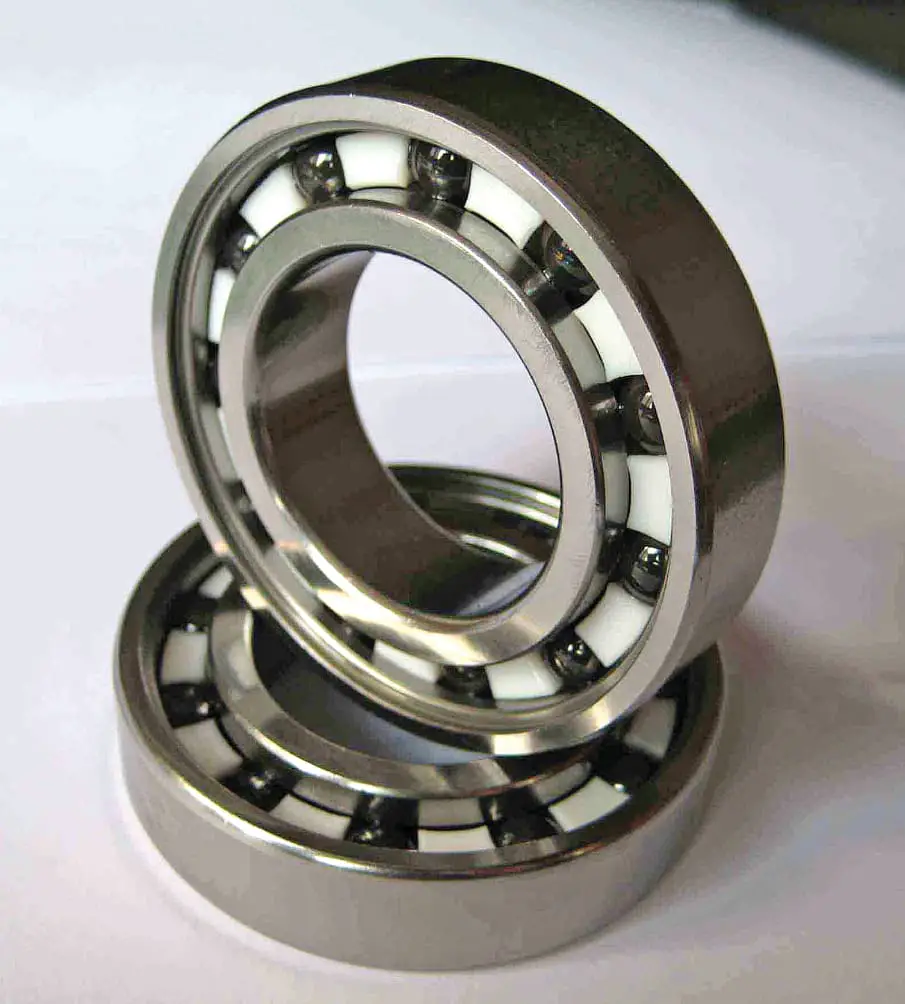ASK THE MXPERTS: THE BEARING OF KINGS

Dear MXA,
What is the deal with ceramic ball bearings? Wouldn’t they be perfect for motocross bikes?
Ceramic bearings are actually hybrid bearings because only the balls are made from the nonferrous ceramic material (although there are ceramic races, but only for special uses). Everything else on the bearing is identical to a standard bearing. The ceramic bearing ball is formed through the action of heat, just like making a ceramic coffee cup. A ceramic ball begins as a fine silicon nitride Si3N4 powder. Under heat and extreme pressure the Si3N4 powder is formed into a bearing ball. The key to its toughness is the sphere shape; it perfectly contains the high-pressure innards. A ceramic bearing ball has twice the Rockwell hardness of steel. Once shaped into a ball it is the third hardest material known to man, following diamond and cubic boron nitride.
A ceramic bearing ball is 2/3rd’s the weight of a steel ball. The surface of the ceramic ball is nonporous and mirror-like. In comparison, a magnified steel ball looks like the surface of the moon. Ceramic is not an oxide and thus cannot rust. The synthesized ball is very resistant to wear and abrasion. It also has very low deformation under load and very low thermal expansion. By themselves the ceramic balls are so smooth, indestructible and glass-surface perfect that they do not need lubrication. But the steel races they ride in do.
A Si3N4 ceramic ball is 1000 times more precise than a steel ball and is preferred in high-precision CNC machinery. Ceramic bearings are the choice where excess bearing heat due to high shaft speed is an issue. The spin rating of some ceramic bearings is as high as 300,000 rpm and easily ten times faster than the best steel ball bearings.
As far as motocross use goes, some factory and privateer teams do use ceramic ball bearings. As a rule they use them in places where the light, ultra-smooth and perfectly round balls make it easier for the bearing to acceleration. The light and smooth balls spin without hesitation and drag. By reducing bearing drag you create horsepower. A ceramic bearing here and there, like on the crank, won’t make much of difference. But, the cumulative effect of ceramic bearings on every turning spindle, axle and shaft in the drive train, as well as in the wheels, can make a noticeable difference. Used in unison they could reduce friction by one to two percent—which may not sound like much, but could equal a half horsepower gain on a 250 four-stroke. That is an easy horsepower gain.
It is however not a cheap horsepower gain because ceramic bearings cost three times more than the most expensive steel bearings. For example a steel crank bearing will cost $20, while a ceramic bearing will run $85. For a factory team the cost of ceramic would spread across four race bikes and eight engines (at least). And since those race bikes are typically torn down every two hours, the cost could run to several thousand dollars in a 29-race season.







Comments are closed.